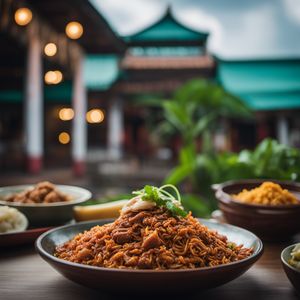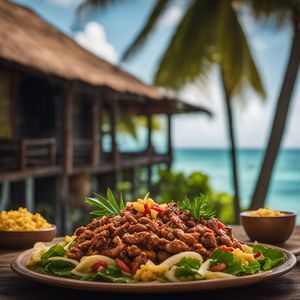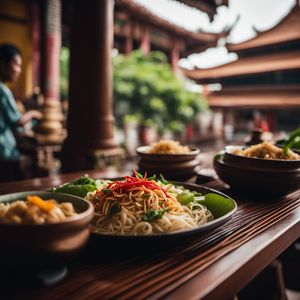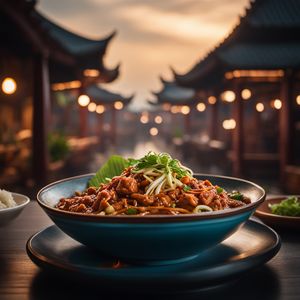
Dish
Cơm nắm
Cơm nắm is made by mixing sticky rice with a variety of fillings, such as pork, chicken, or mushrooms, and shaping it into a ball. It is then wrapped in a banana leaf and steamed until cooked. This dish is high in carbohydrates and protein.
Origins and history
Cơm nắm is believed to have originated in the northern region of Vietnam. It was traditionally eaten by farmers who needed a portable and filling meal while working in the fields. Today, it is a popular street food throughout Vietnam.
Dietary considerations
Gluten-free if made with gluten-free fillings. Can be made vegetarian or vegan by using vegetable fillings and omitting any animal products.
Variations
Variations of cơm nắm may include different types of fillings, such as shrimp or beef, or different types of rice, such as black or red rice.
Presentation and garnishing
To prevent the rice from sticking to the banana leaf, brush the leaf with oil before adding the rice mixture. Use a steamer basket to cook the cơm nắm evenly. Garnish with cilantro and sliced chili peppers for added flavor.
Tips & Tricks
When shaping the rice mixture, wet your hands with water to prevent the rice from sticking to your hands. If you don't have banana leaves, you can use parchment paper or aluminum foil as a substitute.
Side-dishes
Pickled vegetables or a vegetable stir-fry make a great side dish for cơm nắm.
Drink pairings
A Vietnamese iced coffee or a Saigon beer pair well with this dish.
Delicious Cơm nắm recipes
More dishes from this category... Browse all »

Acarajé
Brazilian cuisine

Aloo Pie
Trinidad and Tobago cuisine

Antojitos
Mexican cuisine

Arepa de huevo
Colombian cuisine

Attiéké
Ivorian cuisine

Bake and Shark
Trinidad and Tobago cuisine

Bakwan
Indonesian cuisine

Baleada
Honduran cuisine
More cuisines from this region... Browse all »

Bruneian cuisine
Bold, Complex, Spicy, Savory, Sweet

Burmese cuisine
Salty, Sour, Spicy, Umami, Sweet

Cambodian cuisine
Salty, Sour, Spicy, Umami, Sweet

Christmas Island cuisine
Salty, Sour, Spicy, Umami, Sweet

East Timor cuisine
Spicy, Savory, Sweet, Sour, Umami

Filipino cuisine
Sweet, Sour, Savory, Spicy, Umami

Lao cuisine
Savory, Spicy, Sour, Umami

Malaysian cuisine
Spicy, Sweet, Sour, Savory

